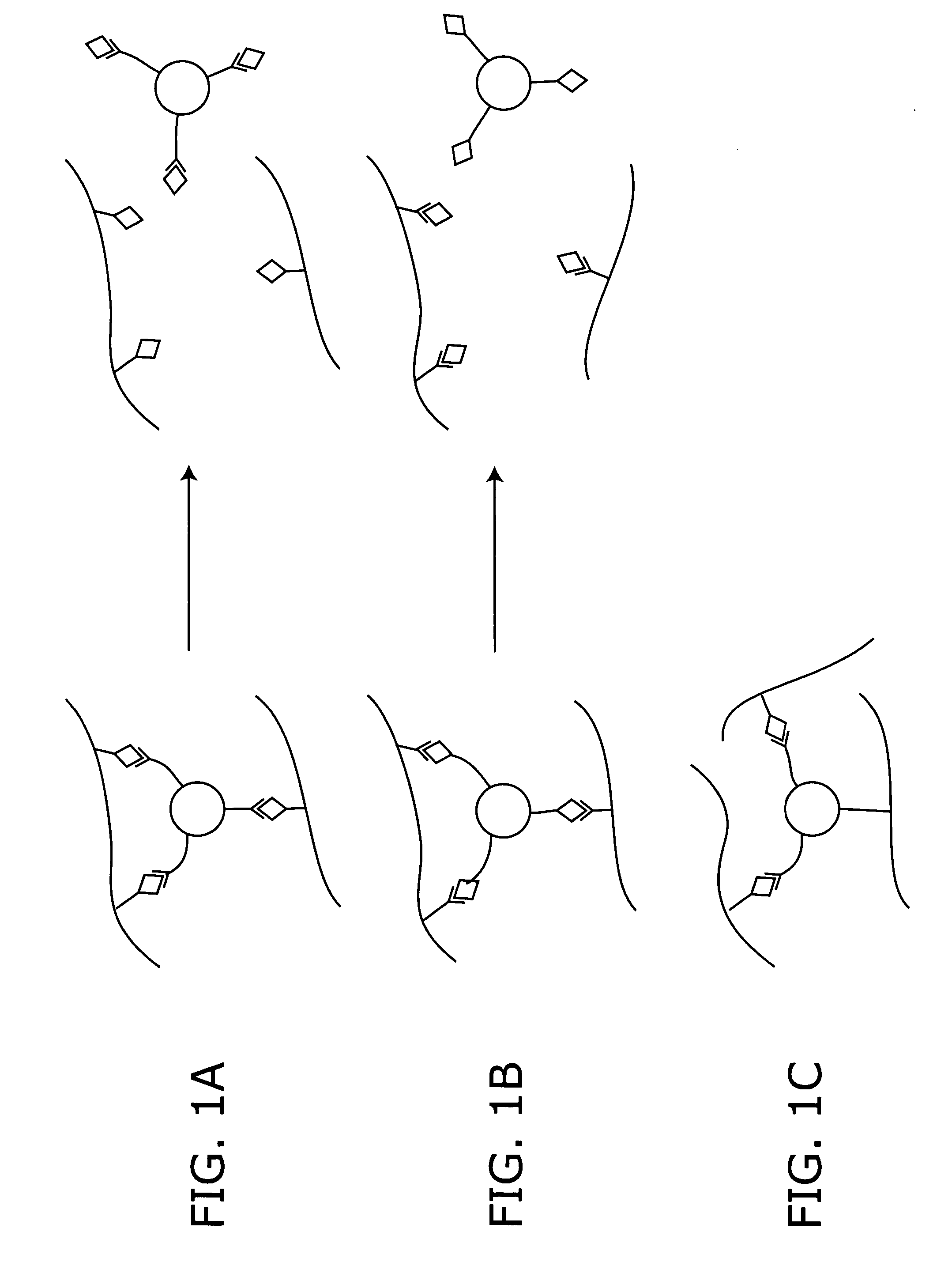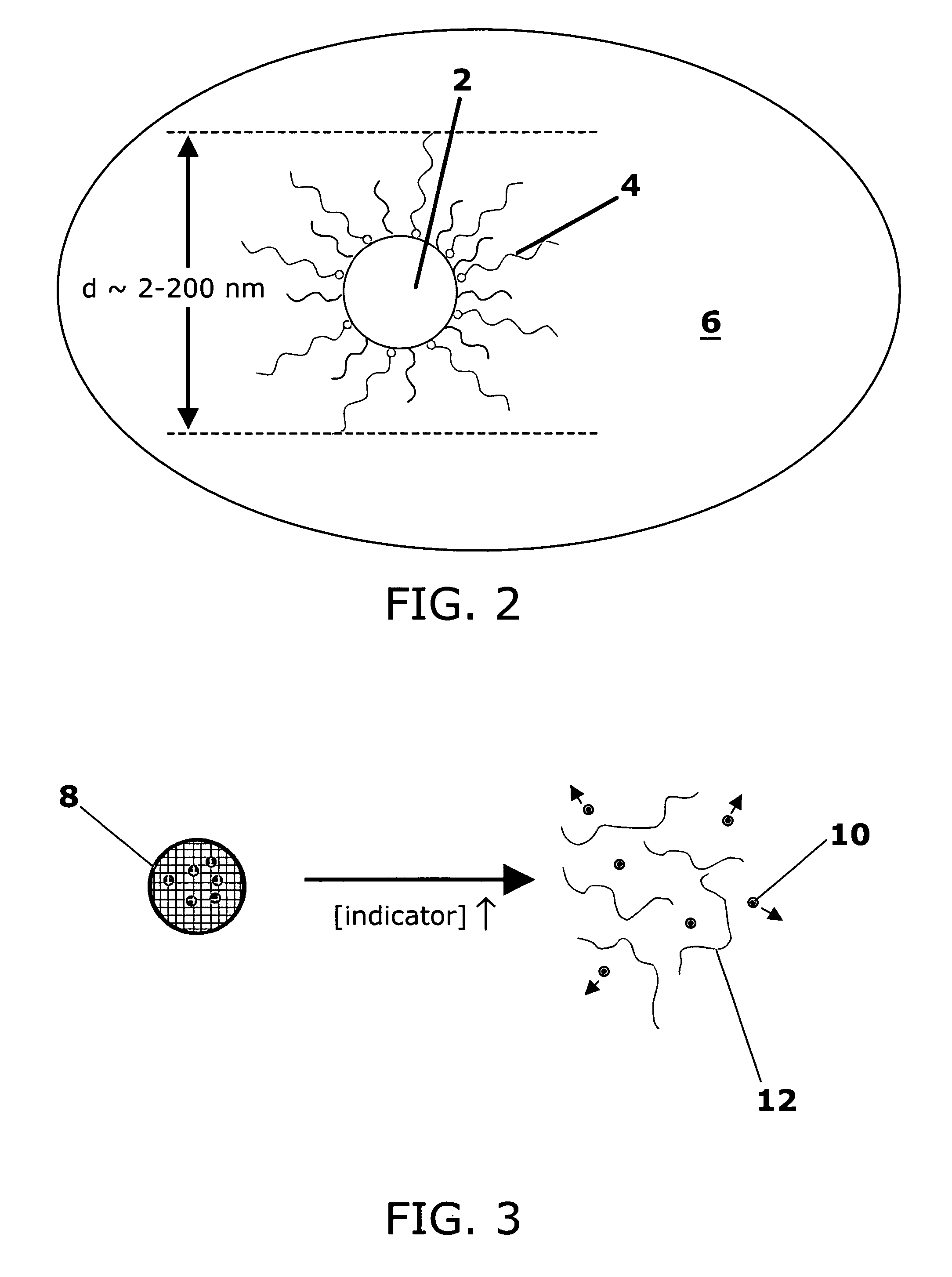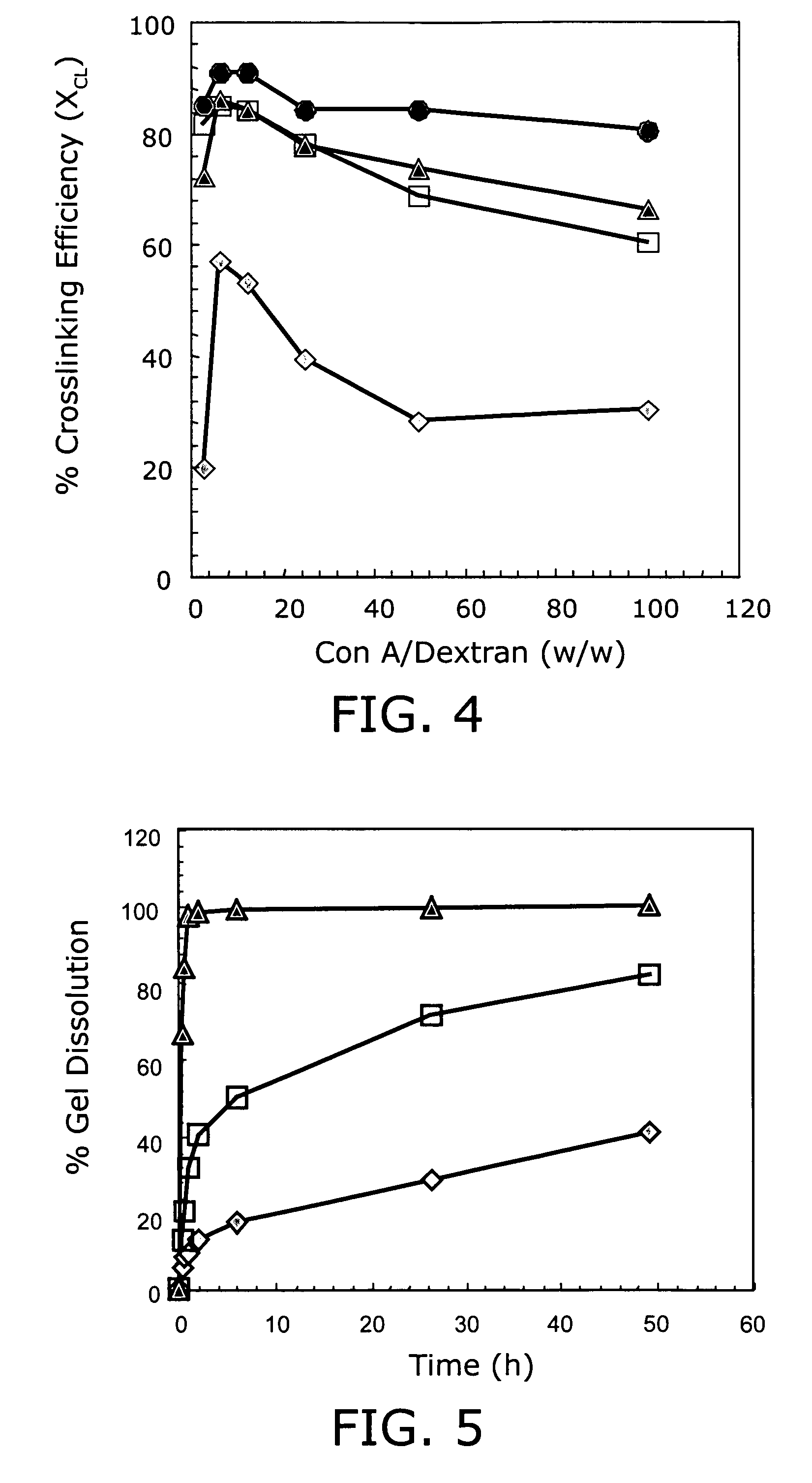Stimuli-responsive systems for controlled drug delivery
a drug delivery and stimuli-responsive technology, applied in the direction of drug compositions, aerosol delivery, microcapsules, etc., can solve the problems of increasing the blood concentration of drugs, and increasing the concentration of drugs, and achieve the effect of low molecular weigh
- Summary
- Abstract
- Description
- Claims
- Application Information
AI Technical Summary
Problems solved by technology
Method used
Image
Examples
example 1
Glucose-Sensitive Hydrogels for Delivery of Insulin
[0094]Con A, a lectin derived from the jack bean plant, was initially chosen as the glucose-binding protein because it is inexpensive, readily available, and extensive work has already been done to evaluate its sugar binding properties. Con A-derived systems represent a tractable model for development of insulin-delivery vehicles employing alternative sugar-binding proteins such as human mannan binding lectin (MBL).
[0095]Because the end application requires repeated dosage, the biodegradable polymer is preferably biocompatible and biodegradable to avoid potentially harmful accumulation. Dextran, poly(α-D-glucose), is attractive because it binds Con A, is available at molecular weights ranging from 2K to 2000K, and is already FDA approved for use as a blood plasma volume expander. Dextran is also a versatile molecule, capable of being covalently modified at the free —OH groups with a variety of chemicals, drugs, and...
example 2
Modifying Glucose Sensitivity of Hydrogels
[0105]Although the Con A-dextran gels appear to respond remarkably well to glucose concentrations in the physiological range, it may be beneficial to modify the gel IGS for certain practical situations. Depending on the site of application (e.g. subcutaneous tissue, intravenous circulation, specific organs, etc.), the local sugar concentration may vary a great deal for a given physiological state, such as fasting or post-prandial. For example, changes in glucose concentration in the subcutaneous fluid (SCF) are well correlated to changes in intravenous (IV) concentration, but the average value in the SCF may be much lower (S. J. Updike, M. C. Shults, B. J. Gilligan, R. K. Rhodes, Diabetes Care 23, 208 (2000)). In addition, one may desire more than one type of glucose-regulated response. One material may be designed with an IGS for normoglycemic concentrations to provide well-regulated long-term insulin release. Another material may be design...
example 3
Insulin Encapsulation and Release
[0108]The dextran gels were originally designed to have a pore structure that inhibits insulin diffusion at low sugar concentrations, but releases insulin as the gel dissolves at higher concentrations. To load the gels with insulin, the synthesis media was modified to contain a solution of bovine insulin at 1 mg / ml. After synthesis and washing, the Dex-70 gels (Con A / dextran=6.1 (w / w)) contained approximately 1% bovine insulin on a dry weight basis as determined by HPLC using a C18 column (Waters Symmetry 5 mm C18, 250×4.6 mm) and a mobile phase of 1.4 ml / min containing 37% v / v acetonitrile in a pH 2.4 sodium sulphate / phosphoric acid buffer. The insulin-loaded gels were then placed in pH 7 buffered saline containing glucose concentrations of 50, 100, and 400 mg / dl, and samples were taken at regular time intervals to measure both dextran and insulin release by HPLC.
[0109]FIG. 12A shows that insulin release profiles are indistinguishable between 50 and...
PUM
| Property | Measurement | Unit |
|---|---|---|
| size | aaaaa | aaaaa |
| size | aaaaa | aaaaa |
| size | aaaaa | aaaaa |
Abstract
Description
Claims
Application Information
 Login to View More
Login to View More - R&D
- Intellectual Property
- Life Sciences
- Materials
- Tech Scout
- Unparalleled Data Quality
- Higher Quality Content
- 60% Fewer Hallucinations
Browse by: Latest US Patents, China's latest patents, Technical Efficacy Thesaurus, Application Domain, Technology Topic, Popular Technical Reports.
© 2025 PatSnap. All rights reserved.Legal|Privacy policy|Modern Slavery Act Transparency Statement|Sitemap|About US| Contact US: help@patsnap.com



